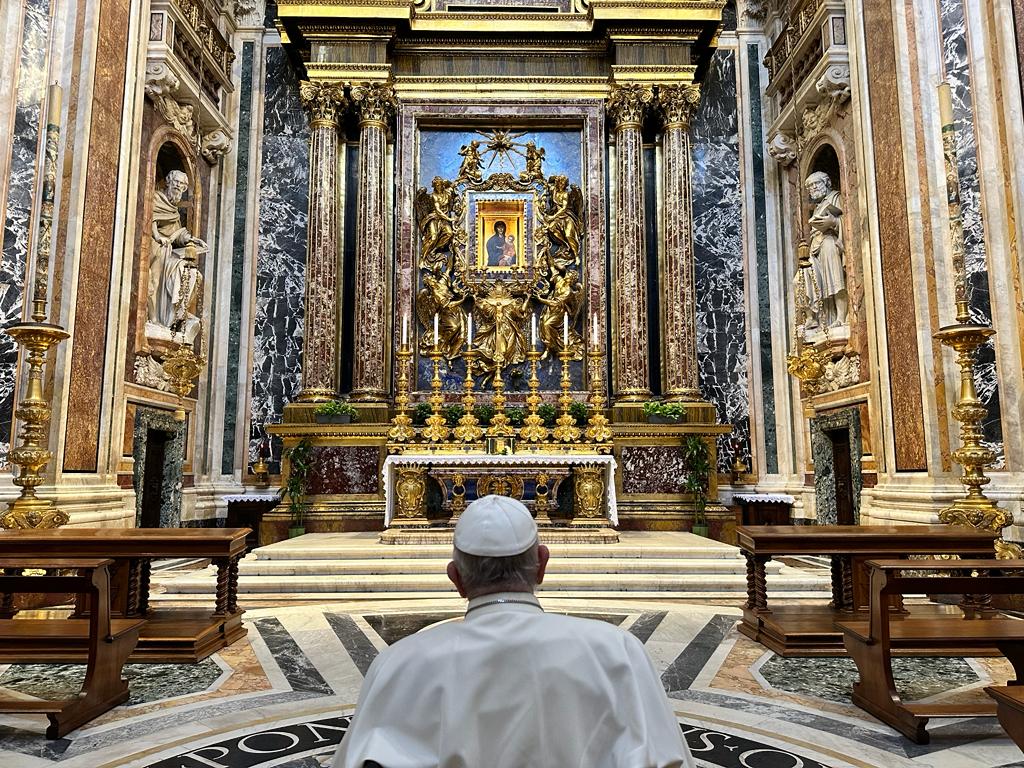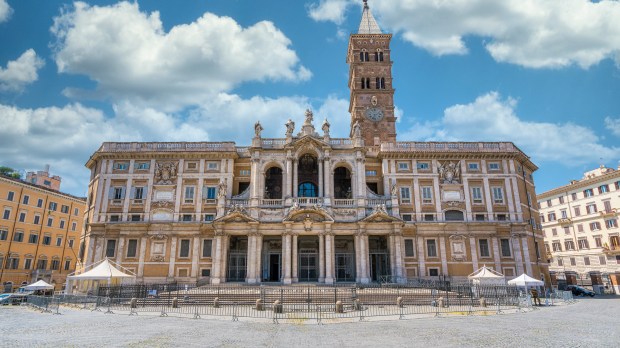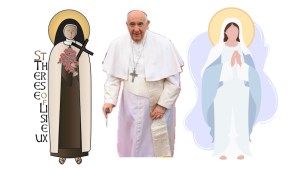Lenten Campaign 2025
This content is free of charge, as are all our articles.
Support us with a donation that is tax-deductible and enable us to continue to reach millions of readers.
In a discreet corner of the Basilica of St. Mary Major, between the prayerful murmurs of the Pauline Chapel and the mystical, almost unreal silence of the Sforza Chapel: This is where Pope Francis chose to be buried, as he revealed last December.
We report from this basilica in Rome’s historic center, where seven popes are laid to rest, and which the Argentine pontiff is particularly fond of.
It’s the end of a rainy spring day in Rome. In the Basilica of St. Mary Major, near Termini station, dozens of visitors look up to admire the sumptuous coffered ceiling covered in gold leaf. Footsteps glide across the marbled floor. The singing of French pilgrims escapes from a side chapel: “Rejoice, for he comes…”
A beloved icon
To the left of the choir is the famous Pauline chapel. It’s home to the icon of the Virgin Mary Salus Populi Romani (salvation of the Roman people) — which, according to tradition, was painted by St. Luke. The chapel is never empty.

Under the protective netting that attests to the work being carried out in the dome, cell phones capture the prestigious paintings that adorn the basilica’s many chapels, and pause for a moment in front of the icon so dear to the Romans, overlooking the altar.
Since his election in 2013, Jorge Mario Bergoglio has come to pray at the icon’s feet 115 times, notably before and after each of his trips. On December 8, the feast of the Immaculate Conception, he honored this Virgin with a Golden Rose. “I’ve always had a great devotion to St. Mary Major, even before I became pope,” he says in his recent book El Sucesor (“The Successor”), written with vaticanist Javier Martìnez-Brocal.
He goes on to explain why he chose to be buried there: “Just beyond the sculpture of the Queen of Peace, there’s a small recess, a door that leads to a room where candelabras were stored. I saw it and thought, ‘This is the place.’ And that’s where the burial site was prepared. I’ve been told it’s ready.”
Buried as a simple Christian
A few steps away, the former candelabra closet is hidden behind an almost anonymous wooden door, past which tourists walk without noticing. The future tomb of the 266th pope will be set against the chapel of Salus Populi Romani, and sheltered in the curve of the protective pillars of the Sforza chapel, the only place reserved for silent prayer. Here, flash photography is forbidden. We dare not even whisper, gripped by the profound silence that inhabits the sober gray stone, saturated by the Rosaries prayed by the contemplative faithful.
The hidden door to Francis’ future tomb is just like him. The pontiff has explained that he wishes to “simplify” the liturgy of papal funerals. As Javier Martìnez-Brocal explained to us:
He wants to dismantle everything that has to do with a logic of monarchy, of the Court… He doesn’t want his remains to be displayed, he wants to be buried like a simple Christian. He wants to return to a certain simplicity and ensure that the figure of the pope is recognized for its spiritual character, without excess.
Between two confessionals
Another detail is of particular significance: the door to Francis’ future tomb is flanked by two confessionals where elderly priests wearing albs whisper in persona Christi, releasing the bonds of sins. As a penitent kneels in the midst of the tourists, it’s easy to think that this is no coincidence. The Argentine pontiff has preached so much about mercy. “God never tires of forgiving” is one of the great leitmotifs of his magisterium, and his gesture of humbly going to confession during penitential celebrations remains one of the great images of his pontificate.

While the choice to be buried in the Basilica of St. Mary Major rather than in St. Peter’s — near the tomb of the Apostle Peter — contrasts with his recent predecessors, Pope Francis will not be the only pontiff to be laid to rest here. Seven popes are buried in St. Mary Major: Honorius III (1216-1227), Nicholas IV (1288 to 1292), Pius V (1566-1572), Sixtus V (1585-1590), Clement VIII (1592 to 1605), Paul V (1605-1621) and Clement IX (1667-1669).
In any case, Pope Francis explained that he had made this promise to the Virgin Mary, with whom he has “a very great bond.” His body will therefore be close to her, in the only major basilica dedicated to her.


